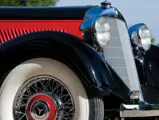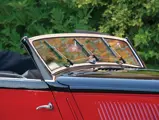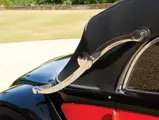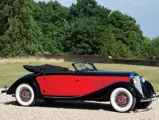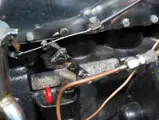60 bhp, 2867 cc six-cylinder inline engine, three-speed floor shift manual transmission with fourth-gear overdrive, upper arm with coil-spring and transverse leaf-spring front suspension, swing axle and coil-spring rear suspension, and four-wheel hydraulically actuated drum brakes. Wheelbase: 3,302 mm
The Mercedes-Benz 290, internally coded as the W18, was introduced in the early 1930s as a replacement for the dated Type 350 Mannheim model and W10 chassis. The 290 implemented the same upgraded suspension that was to be found on most Mercedes-Benz automobiles from the early 1930s to nearly the 1960s. A pressed-steel box frame, fitted with upper arm, coil- and transverse leaf-spring suspension in the front and swing axle with coil springs in the rear, offered a much smoother ride over its U-section frame and leaf spring rigid axle predecessors. The 290 was fitted with a smaller six-cylinder engine, in comparison to the previous Mannheim models, but it could still attain a claimed top speed of 103 km/h, due in part to its three-speed transmission, which incorporated a fourth-gear overdrive ratio. The 290 offered several body styles, including a saloon, a tourer, and cabriolets A, B, C, and D. In addition, a long-wheelbase chassis could be ordered and fitted with saloon, Pullman limousine, tourer, cabriolet A, B, D, and F, roadster, streamlined saloon, and luxury saloon bodies. To differentiate between the two wheelbases, the long wheelbases were denoted with lang in their title, which is German for long.
The gracious example offered here is a 290 Lang Cabriolet A that presents very well in two-tone black and Signal Red. A tag prominently affixed to the cowl indicates that this 290 was rebodied into its current form in 2004 by Jahn Bahr Karosserie. Today, the exterior finish displays well, with only minor wear to the panel edges and some bubbling near the rear spare tyre carrier. The exterior brightwork has been re-plated and shows light patina from polishing. The black cloth convertible top is nicely fitted, and additional accoutrements include jewels inlaid in the headlight buckets, accessory Hella lights fixed to the front bumper, flush cowl-mounted trafficators, and an elegant whitewall spare tyre mounted flush with the rear deck. The chrome-plated wire spoke wheels, which have red and black painted chrome centre caps and are shod in wide whitewall tyres, show quite well.
The parallel opening bonnet covers the well-kept engine bay, which appears to have been cleaned and cosmetically maintained since its restoration. The six-cylinder engine displays silver and black paint, and many of the ancillary components are finished in the appropriate colours. In addition, modern wiring, tubing, and hoses are all visible in the engine bay, for added reliability and peace of mind. The chassis exhibits an orderly black finish with minor soiling from use, along with a newer exhaust system.
The well-appointed interior, clad in black vinyl upholstery and black carpeting, exhibits no obvious wear. The interior chrome switchgear, door pulls, and still plates have been re-chromed, and the dashboard, clad in dark wood trim, exhibits a refinishing with care taken to preserve its rich appearance. One of the interesting features of this Cabriolet A is a sideways-facing jump seat located in the rear cabin. The jump seat can be shifted to allow for the removal of the boot access panel, where the convertible top boot is stored, providing some room for storage. This lovely Cabriolet A presents well and would make a fine addition to any collection, as it provides the opportunity for touring in elegance and style.
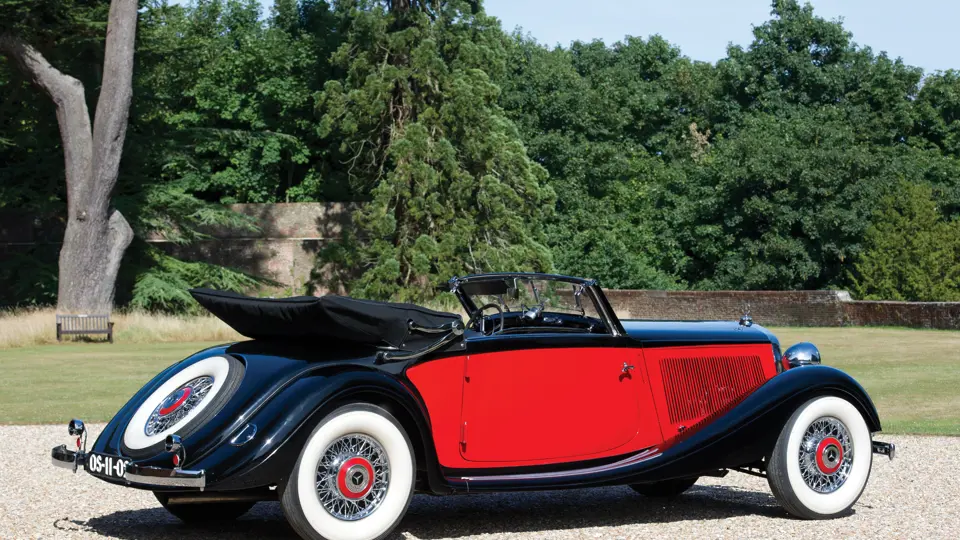













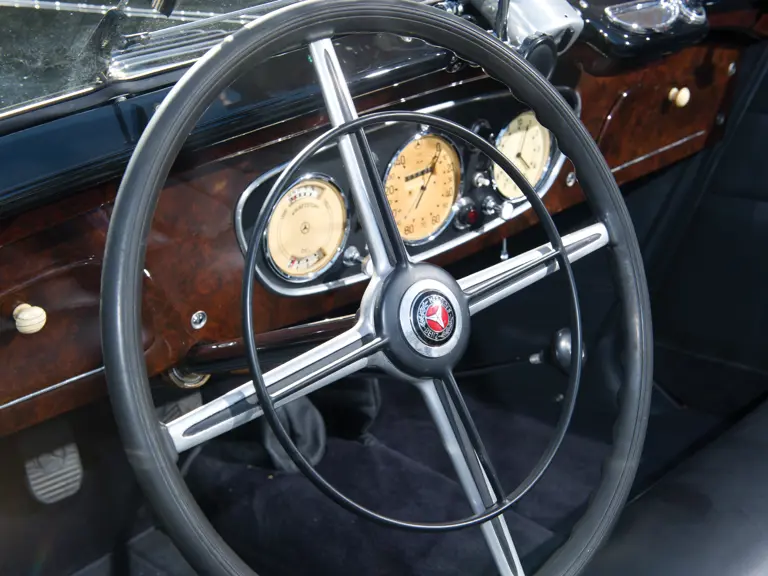


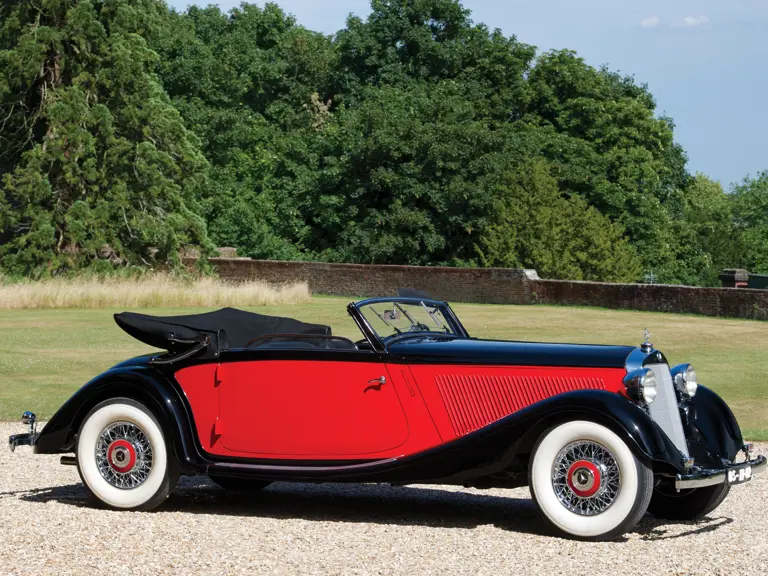





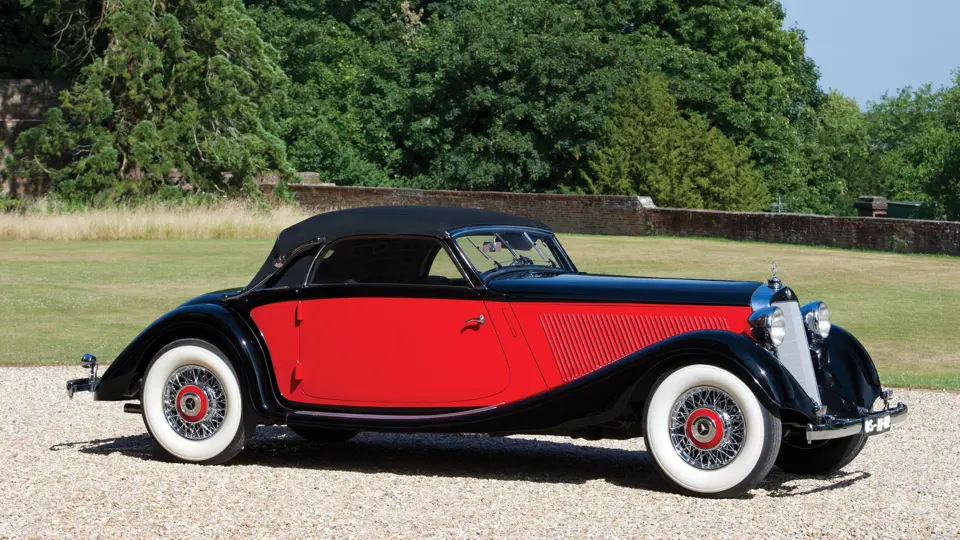
 | London, United Kingdom
| London, United Kingdom





